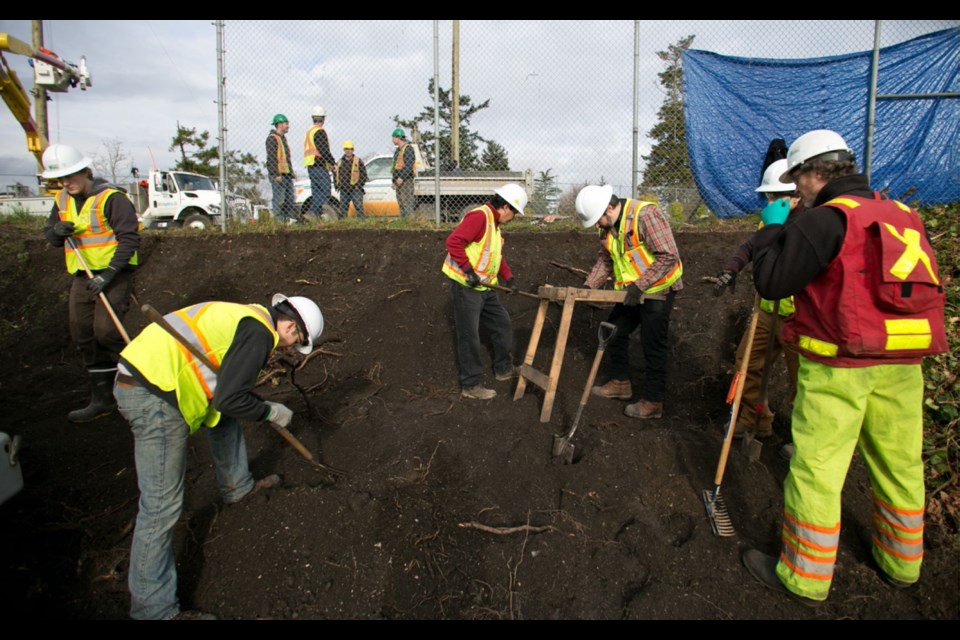Soil from Craigflower Elementary School’s playing field is being painstakingly sifted by archeologists and First Nations representatives after two sets of human remains were found by B.C. Hydro crews digging holes for power poles.
The B.C. Hydro line is being temporarily relocated in preparation for construction of the new $11.9-million Craigflower Bridge, a joint Saanich and View Royal project.
Work on replacing the bridge is expected to begin in April and take about six months, but if further skeletal remains are found, the schedule could be disrupted.
If these are the only two sets of remains found, the project will proceed on time and on budget, said Saanich engineering director Colin Doyle.
“[But] when we’re dealing with an archeological site, we just need to be flexible.”
The human remains were found in an area traditionally known as Kosapsom by ancestors of the Songhees and Esquimalt First Nations. It is believed to have been inhabited for more than 2,500 years and is known to contain a huge shell midden.
Numerous skeletons have been discovered in the area previously, said Songhees band councillor Ron Sam.
“That field is one huge archeological site,” he said. “It has been fenced off quite a way down and we will work with the municipalities of Saanich and View Royal. They have been very respectful of our wishes.”
The first set of remains is probably quite old and the second set was buried a little later, Sam said.
The remains may be kept safe until the bridge project has been completed as more remains could be unearthed and they could then be reburied together, Sam said. An area beside Craigflower Manor could be considered for reburial of all ancestors found in the area, he suggested.
Other archeological discoveries such as old roasting pits or artifacts are likely to be found as the project progresses, Sam said.
Coast Salish tribes are believed to have fished in the area for thousands of years and had common winter quarters beside Portage Inlet.
Doyle said test holes were dug previously as the area was known to be archeologically significant, but a more intensive effort is now underway.
“We will dig test holes on a much tighter grid so we can reduce the risks of more unexpected finds,” Doyle said.
“We fully expected we would find midden [artifacts], but the discovery of human remains is something entirely different and we need to adopt work practices to deal with that.”
Crews will be stripping off topsoil and inspecting it this week, Doyle said.
For now, one of the priorities is protecting the site from vandals or people who may be disrespectful, Sam said.
Other burial sites in the vicinity, such as burial cairns by Fort Rodd Hill National Historic Site, have been vandalized recently, he said. “Kids have been partying on them and lighting fires on them.”
Parks Canada takes that issue seriously and is working on the problem, said Fort Rodd Hill site manager Matthew Payne.
“We continue to monitor the site and keep both Songhees and Esquimalt First Nations informed about any activity that has taken place,” he said.
“We are in discussions with Songhees and Esquimalt First Nations to look at solutions that would better protect these kinds of sensitive areas.”



